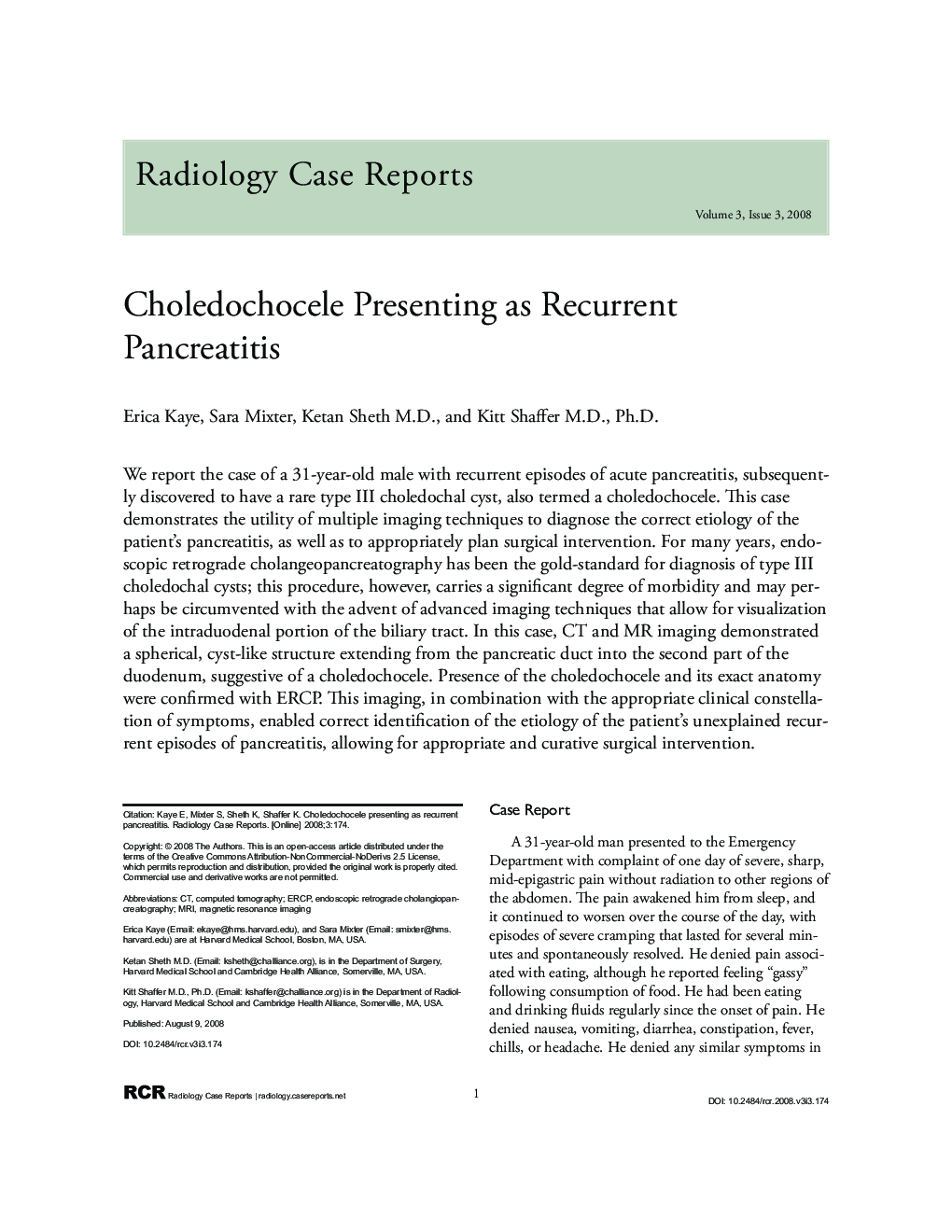| Article ID | Journal | Published Year | Pages | File Type |
|---|---|---|---|---|
| 4248343 | Radiology Case Reports | 2008 | 8 Pages |
Abstract
We report the case of a 31-year-old male with recurrent episodes of acute pancreatitis, subsequently discovered to have a rare type III choledochal cyst, also termed a choledochocele. This case demonstrates the utility of multiple imaging techniques to diagnose the correct etiology of the patient's pancreatitis, as well as to appropriately plan surgical intervention. For many years, endoscopic retrograde cholangeopancreatography has been the gold-standard for diagnosis of type III choledochal cysts; this procedure, however, carries a significant degree of morbidity and may perhaps be circumvented with the advent of advanced imaging techniques that allow for visualization of the intraduodenal portion of the biliary tract. In this case, CT and MR imaging demonstrated a spherical, cyst-like structure extending from the pancreatic duct into the second part of the duodenum, suggestive of a choledochocele. Presence of the choledochocele and its exact anatomy were confirmed with ERCP. This imaging, in combination with the appropriate clinical constellation of symptoms, enabled correct identification of the etiology of the patient's unexplained recurrent episodes of pancreatitis, allowing for appropriate and curative surgical intervention.
Keywords
Related Topics
Health Sciences
Medicine and Dentistry
Radiology and Imaging
Authors
Erica Kaye, Sara Mixter, Ketan M.D., Kitt M.D., Ph.D.,
